Getting A Good Latch
- Home
- Breastfeeding
- How to Breastfeed
- Learning to Breastfeed
- Getting A Good Latch
No matter how you hold your baby while breastfeeding, it’s important to get a good latch. A good latch will help you feel comfortable and allow your baby to get the most milk.
Create a calm environment
Breastfeeding will be easier when you and your baby are relaxed and calm. Find a comfortable chair and position where you feel safe and supported. Try playing some soft, calming music.
Hold your baby skin-to-skin
Hold your baby, wearing only a diaper, against your bare chest. Hold the baby upright between your breasts, and just enjoy your baby for a while with no thoughts of breastfeeding.
Let your baby lead
One way to get your baby to latch is to let them lead and follow their natural instincts to suck. Allowing your baby to search for the breast can take some of the pressure off you and help keep your baby calm and relaxed. If your baby is not hungry, they will stay curled up against your chest. If they are hungry, your baby will bob their head against you, try to make eye contact, and squirm around.
Support and help your baby, but don’t force the latch
Your baby may need help latching at first. Use one arm to support your baby’s head and shoulders as they search for your breast. Use your other arm to support your breast by using a C hold or U hold. When your baby’s chin hits your breast, the firm pressure will make them open their mouth wide and up over the nipple.
As they press their chin into the breast and open their mouth, they should get a deep latch. When your baby has a good latch, they can breathe at your breast and their nostrils will flare to allow air in. Check to make sure your baby’s nostrils are not blocked by your breast.
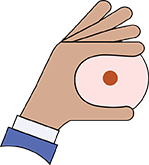
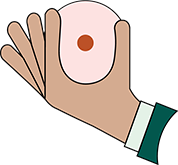

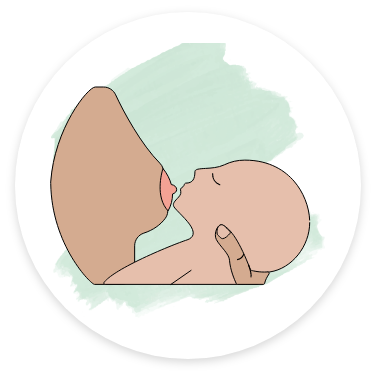
Tickle the baby’s lips to encourage them to open wide.
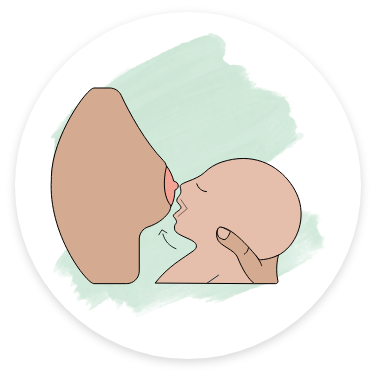
Pull your baby close so that the chin and lower jaw moves into your breast first.

Watch the lower lip and aim it as far from the base of the nipple as possible, so the baby takes a large mouthful of breast.

Tickle the baby’s lips to encourage them to open wide.

Pull your baby close so that the chin and lower jaw moves into your breast first.

Watch the lower lip and aim it as far from the base of the nipple as possible, so the baby takes a large mouthful of breast.
Continue to nurse on-demand, about 4-6 times in 24 hours.
Babies may experience a growth spurt around 6 months of age and may feed more often.
Offer breast milk in a cup.
24-32 oz. per day of infant formula.
Offer formula in a cup.
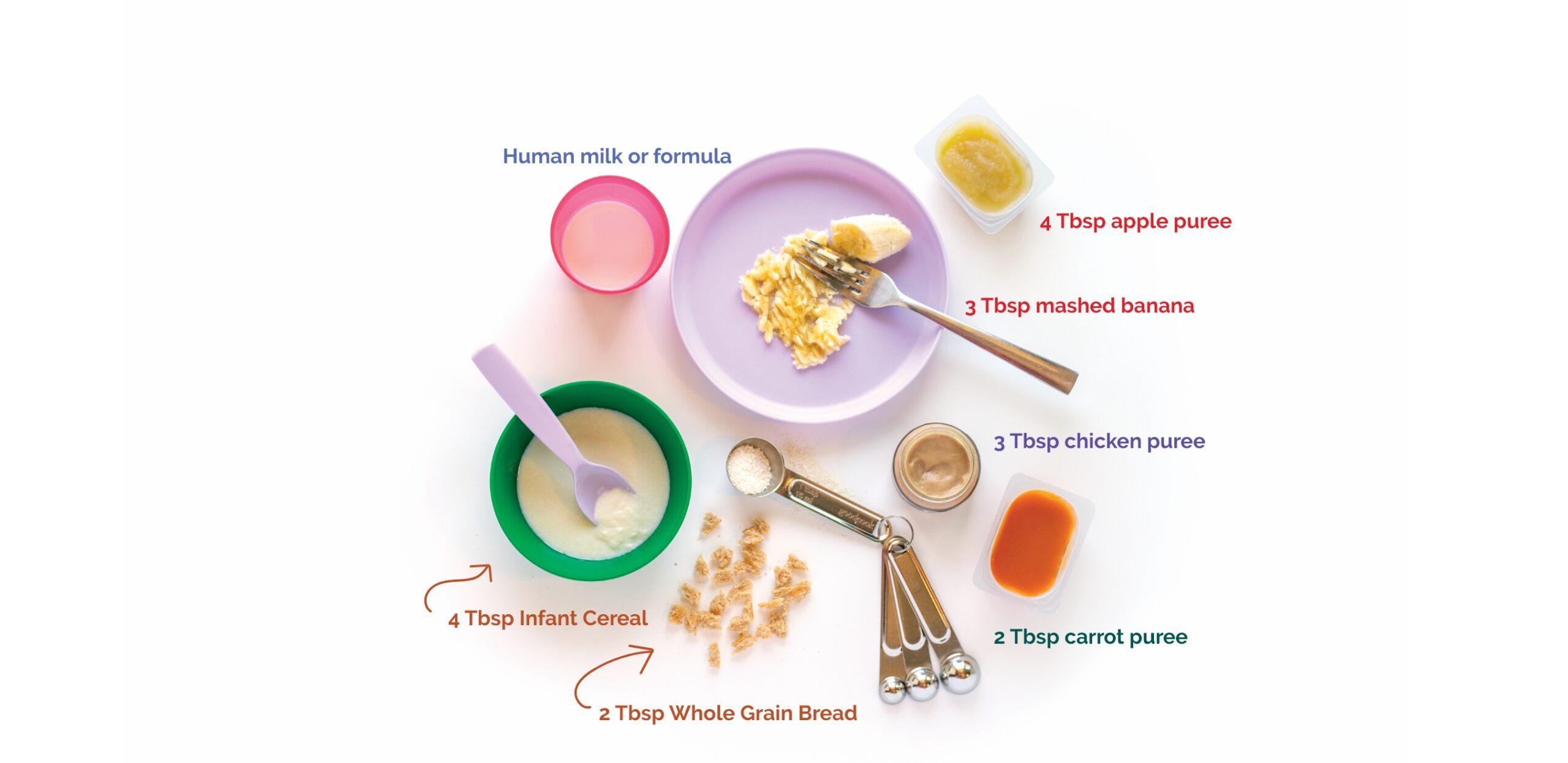
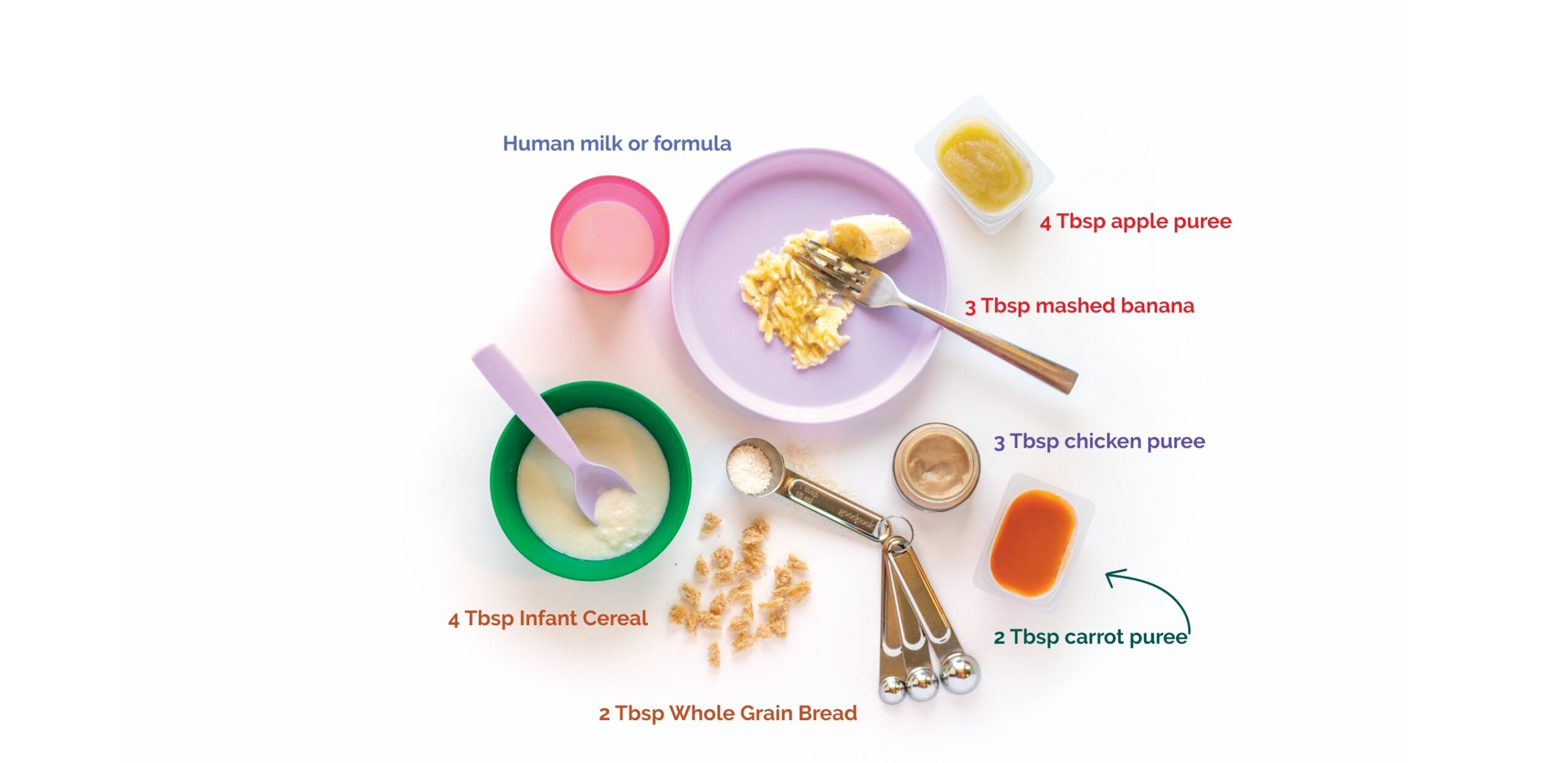
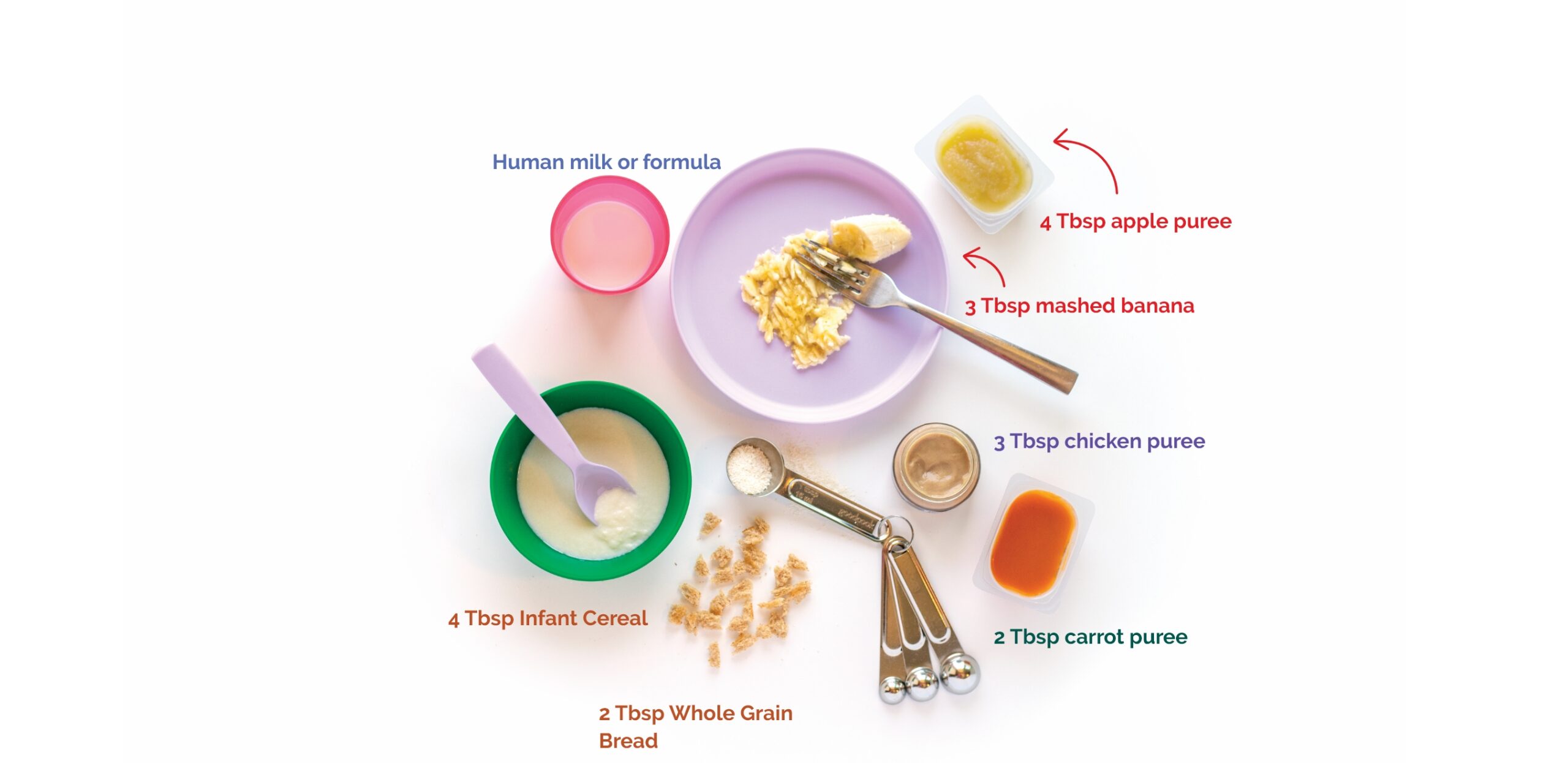
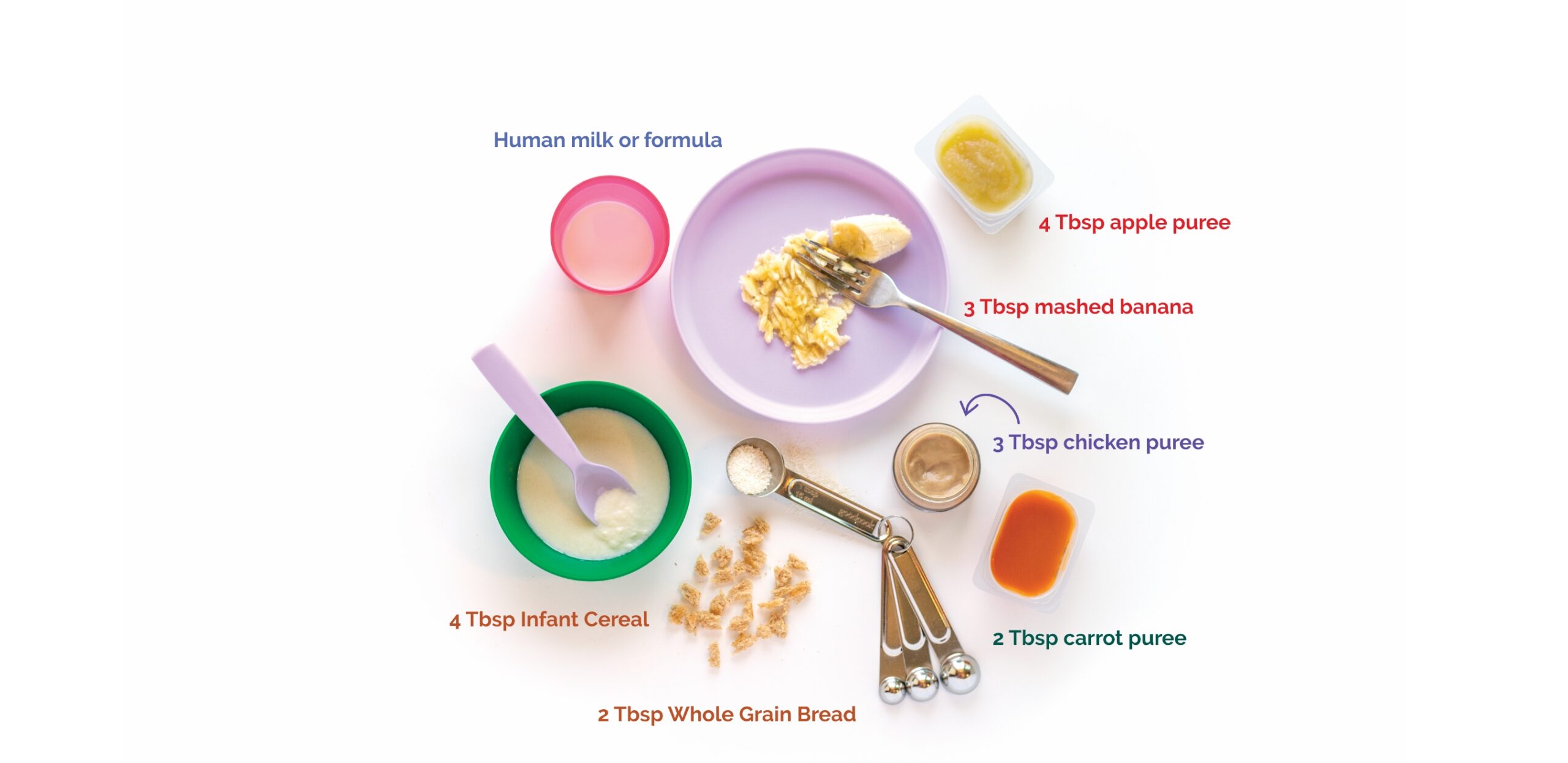
Breast milk is the most important source of nutrition for your baby, even after you start offering solid foods.
Continue to nurse on-demand, 3 or more times per day.
16-24 oz. per day. Offer in a cup.
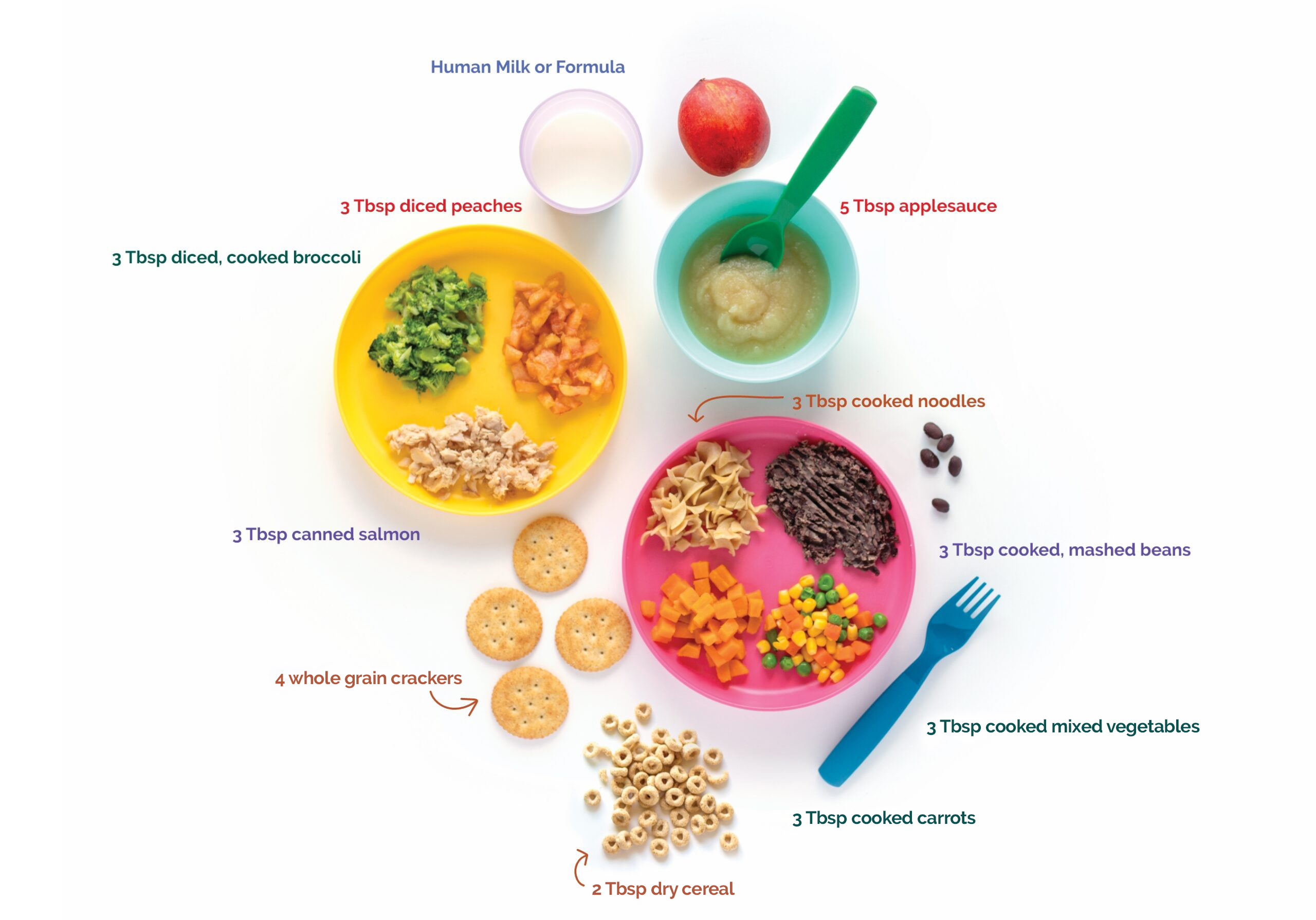

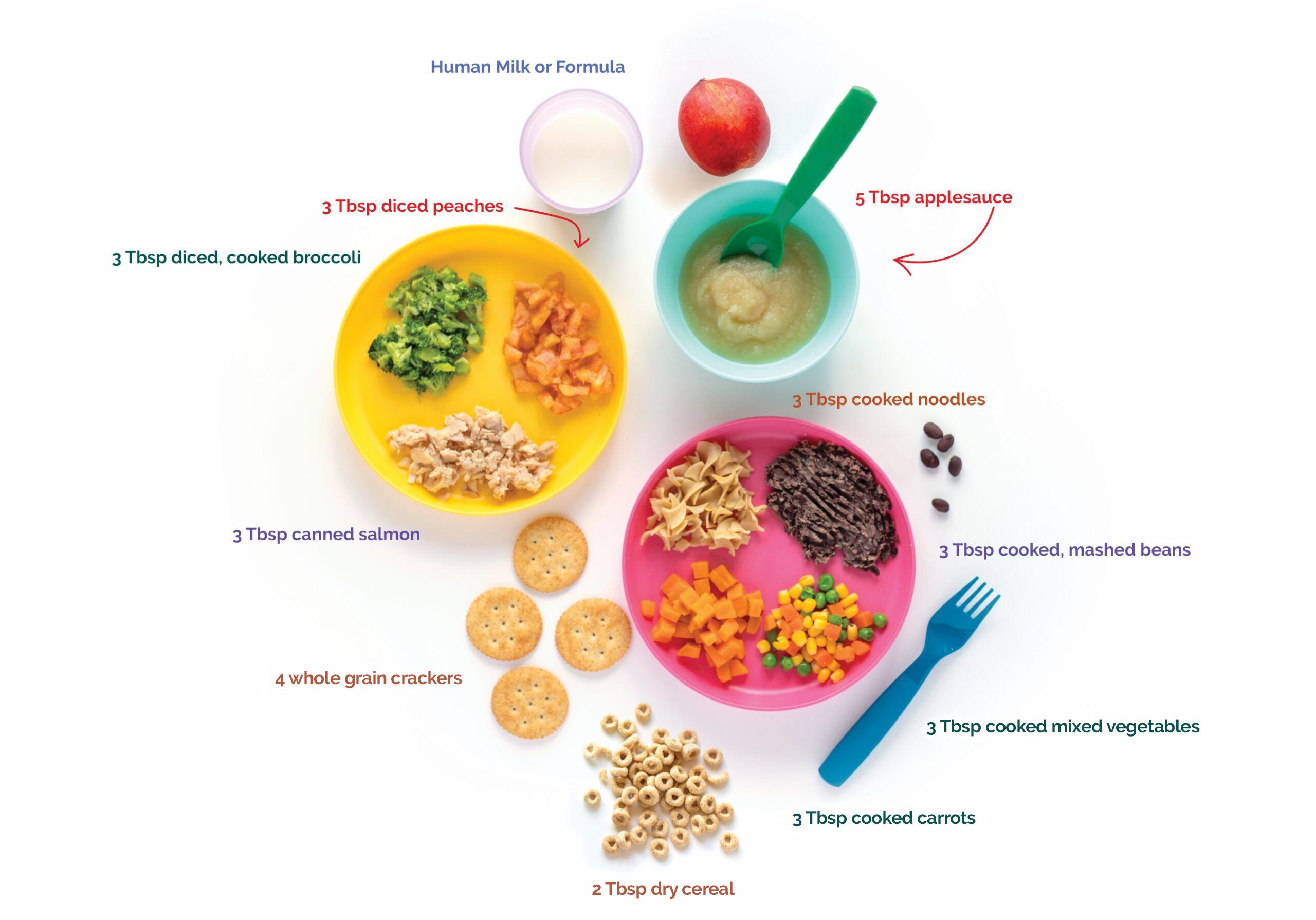
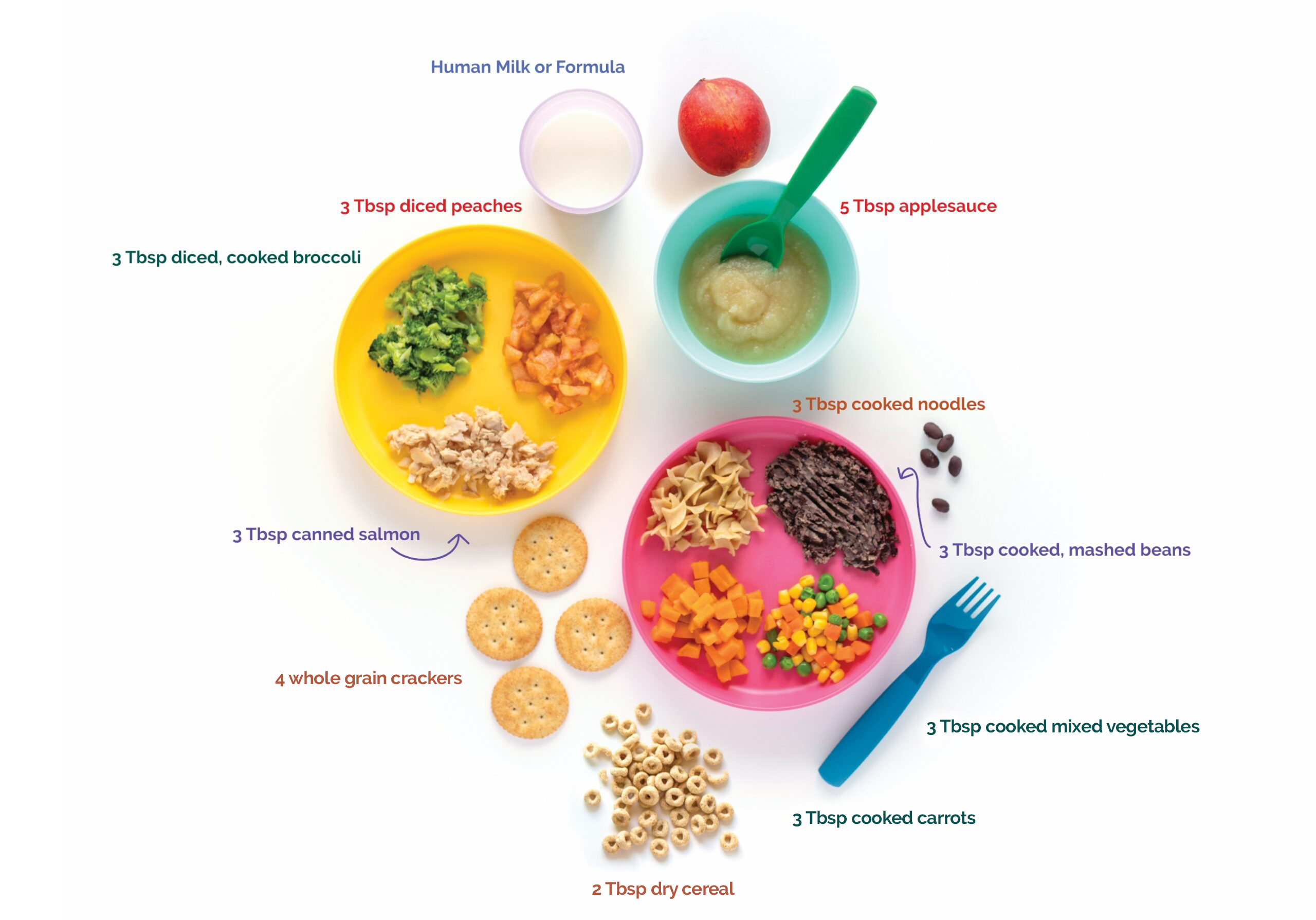
Feed solids with a spoon. Never put cereal in a bottle.
Continue nursing on-demand, at least 4 times in 24 hours.
If your baby seems less interested in nursing after you introduce solids, try nursing before you offer solids.
Offer breast milk in a cup.
24-32 oz. per day.
Offer formula in a cup.
4-8 Tbsp. per day.
Plain iron-fortified infant cereals.
Plain rice or pasta.
Baby crackers, small pieces of bread, or soft tortillas.
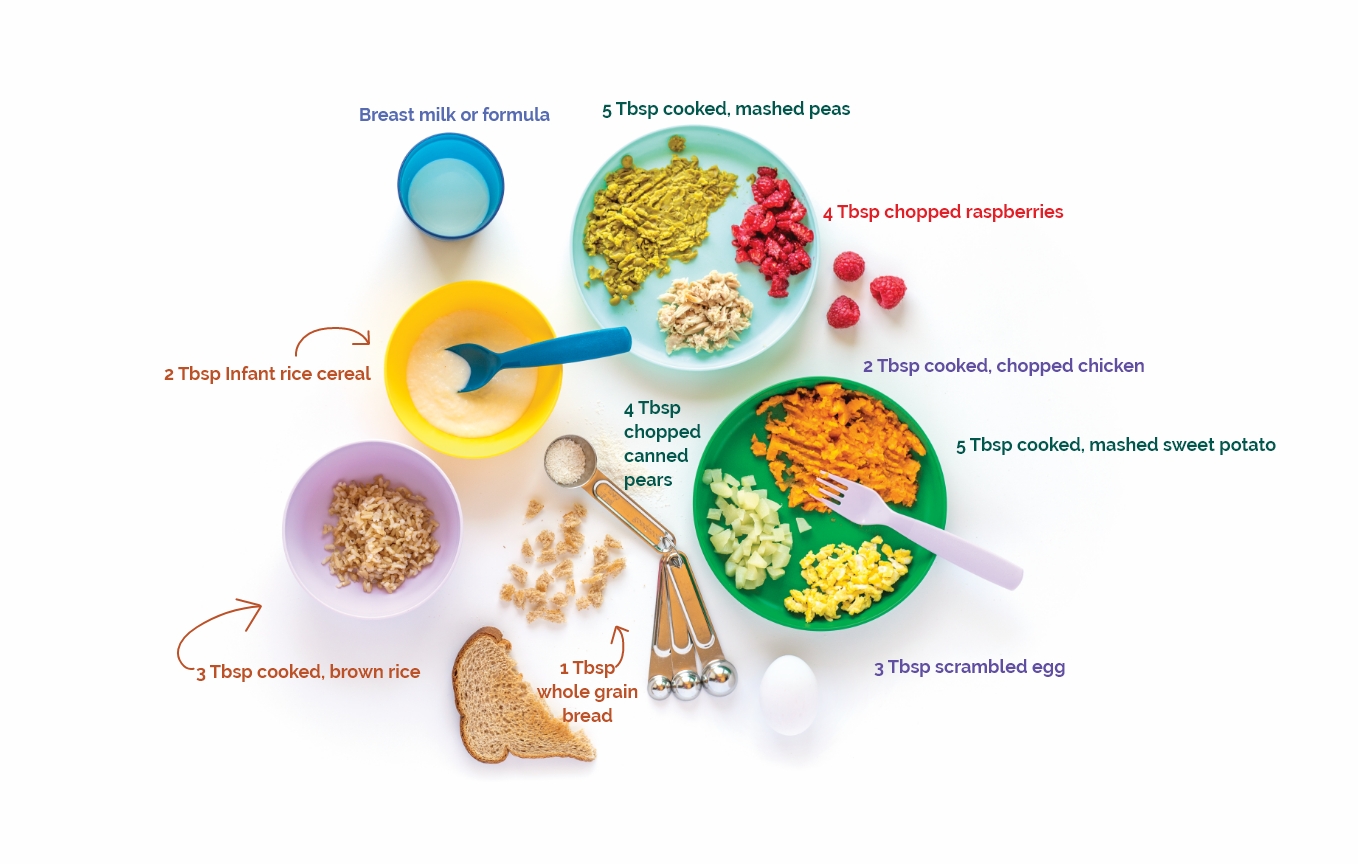
8-12 Tbsp. per day.
Plain cooked vegetables, mashed with a fork.
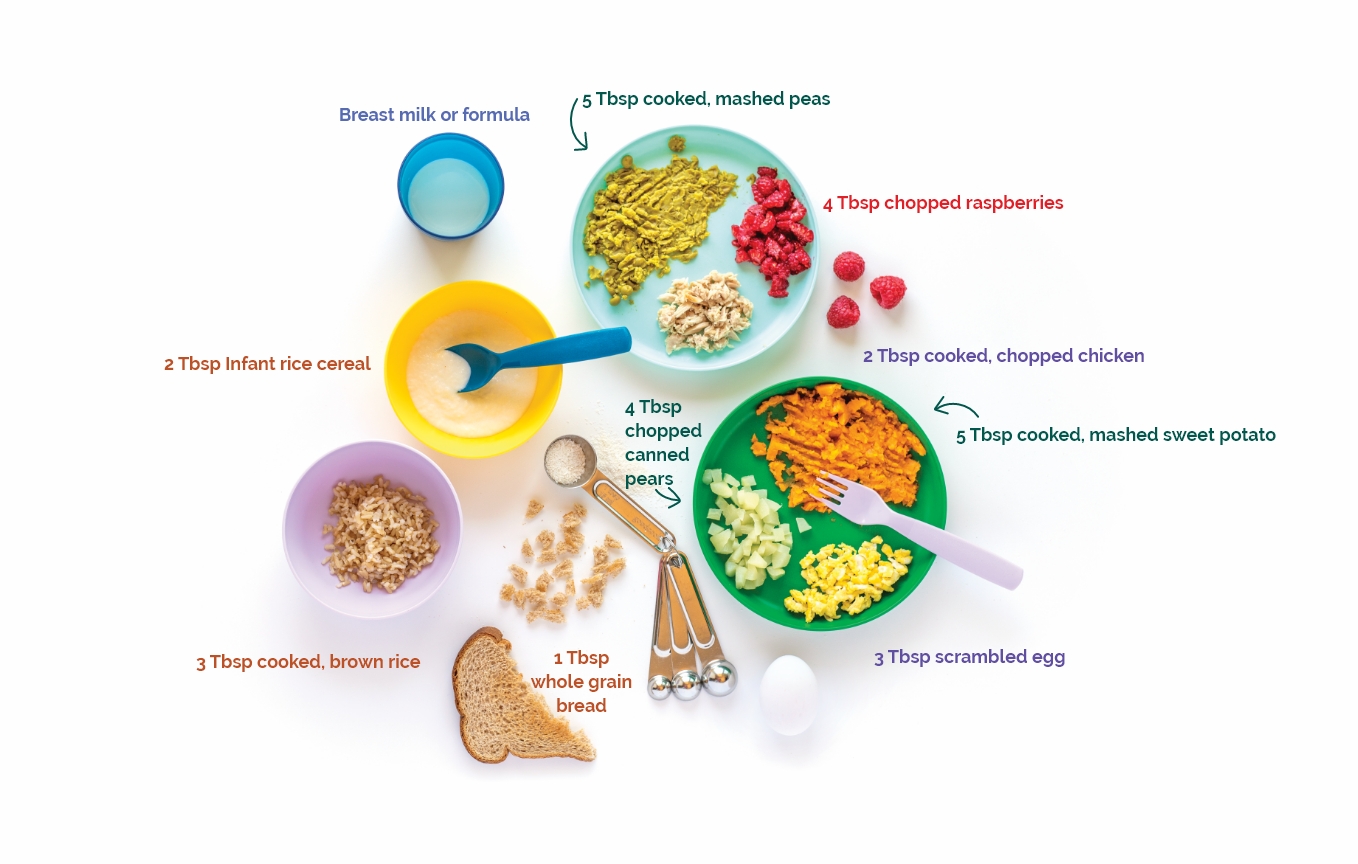
8-12 Tbsp. per day.
Peeled soft fruit in bite-size pieces.
Unsweetened canned fruit.
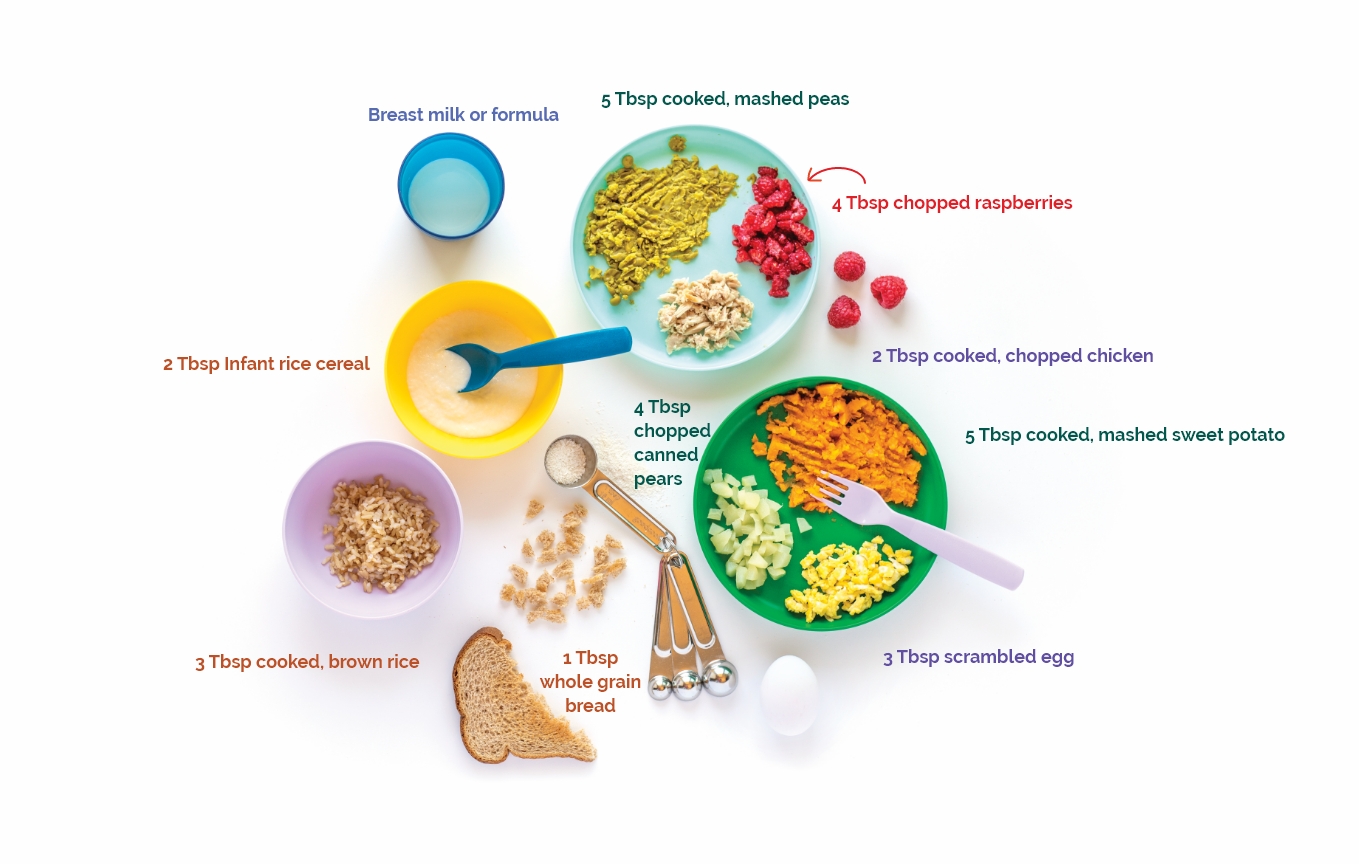
4-8 Tbsp. per day.
Finely ground, chopped, or diced meats, poultry, eggs, fish, or cooked mashed beans.
Cottage cheese or mild cheese.
Thinned, smooth peanut or nut butter.
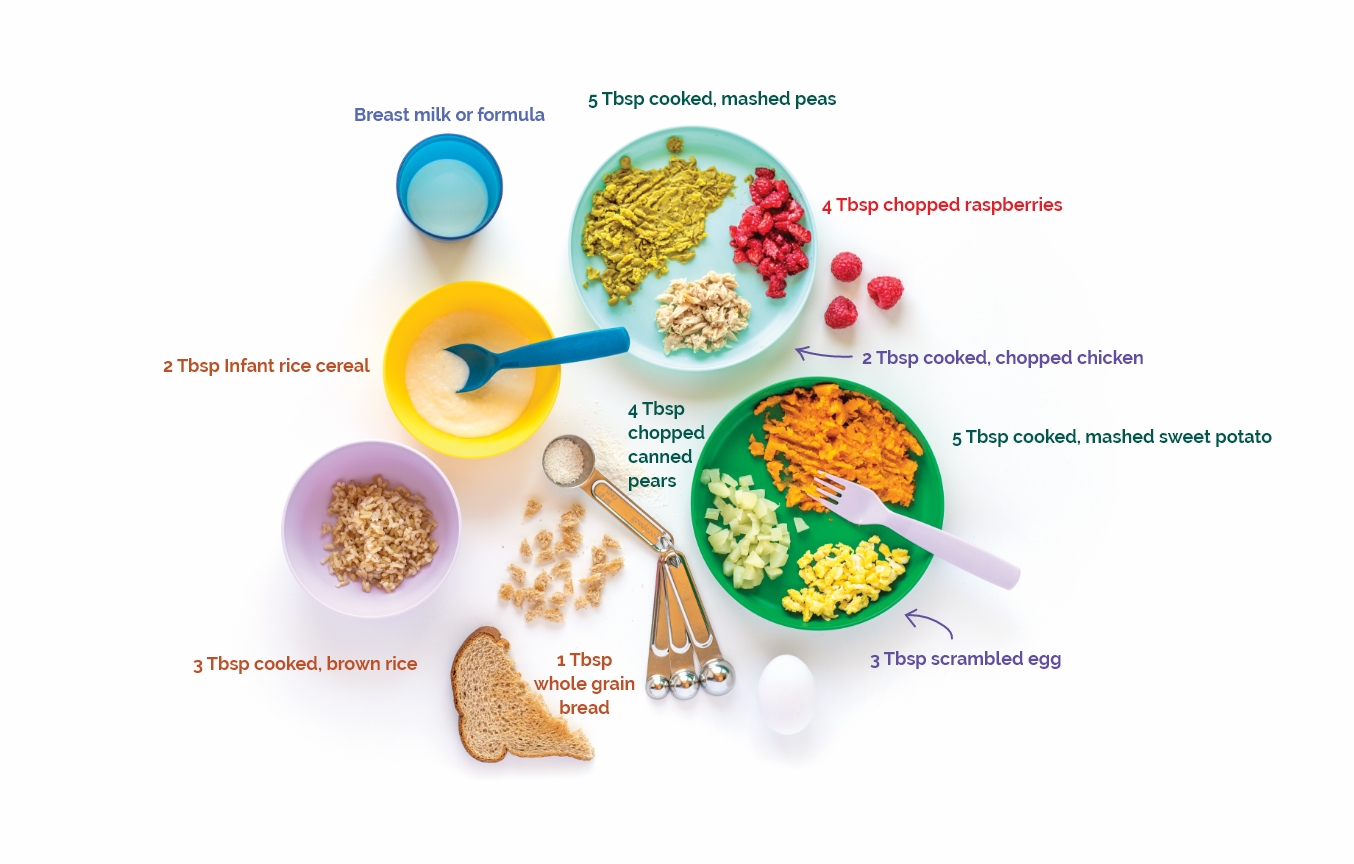

Around 2-3 weeks, 6 weeks, 3 months, and 6 months of age, babies may experience a growth spurt when they feed more often.
As they grow babies can hold more milk, so feedings may become further apart and take less time.
To prevent choking, always hold your baby when feeding. Never prop up a bottle to feed.
Start offering whole milk when your baby is one year old.
The American Academy of Pediatrics recommends exclusive breastfeeding for the first six months and that breastfeeding continue for at least 12 months and beyond.

Wait to offer solid foods until your baby:
To prevent choking, always hold your baby when feeding. Never prop up a bottle to feed.
Try one new food at a time. Wait 5 days before trying another new food to watch for allergies. Food allergies may include wheezing, rash, or diarrhea.
Introduce peanut butter around 6 months. Spread a small, thin smear of peanut butter or nut butter thinly on a cracker. Watch your baby for any reaction for the next 2 hours.
Babies under one year should NOT have honey due to the risk of botulism. Also, babies should not have foods that can cause choking like nuts or whole grapes.
All babies are different. Talk with WIC or your baby’s healthcare provider about your baby’s needs.






Before teeth come in, wipe gums with a soft, clean wash cloth after each feeding, especially before bed.
Nurse your baby on-demand, at least 7-9 times in 24 hours.
When your baby starts teething, they may want to nurse more often.
25-45 oz in 24 hours.
Your baby needs about 4-6 oz of iron-fortified formula every 3-4 hours.
Your baby may start to feed on a schedule. Instead of focusing on fixed amounts, let your baby tell you when they have had enough.
Newborns have tiny tummies and need to be fed often. In the first few weeks, you may need to wake your baby to feed if they sleep longer than 4 hours.
Many babies are fussy during a growth spurt and will want to nurse longer and more often. This is called cluster feeding. This is your baby’s way of helping you increase your milk supply so that you can keep up with their needs. Remember, the more your baby nurses, the more milk your body makes.
Growth spurts can happen at any time, and every baby is different.
They often happen at these ages:

2 to 3 Weeks

6 Weeks

3 Months

6 Months
Breastfeed 8-12 times in 24 hours to help your newborn stay healthy.
Nurse on-demand and when your newborn shows signs of hunger, such as sucking on hands or smacking lips.
In the first few days, newborns need 2-3 oz. of iron-fortified infant formula every 3-4 hours.
By the end of the first month, your newborn needs about 4 oz. every 4 hours.
Feed on-demand and when your newborn shows signs of hunger.